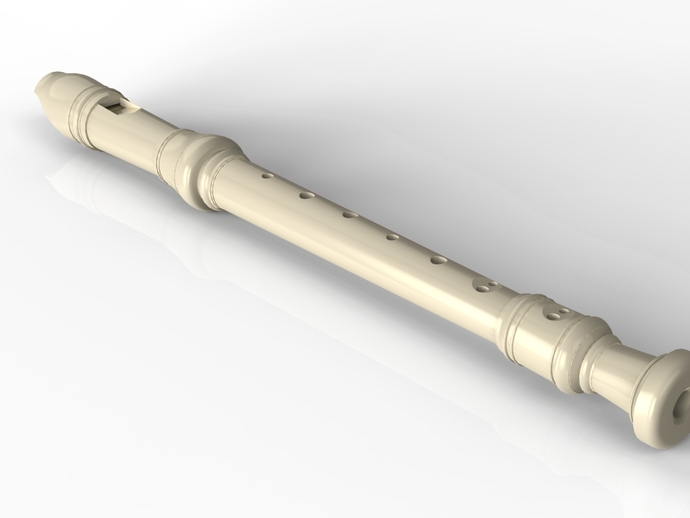
A Recorder Flute
thingiverse
The Recorder is one of the oldest flutes around that's still in use. The Recorder is one the main reasons the Ocarina lost much of its hold over the musical domain. It grew to its greatest popularity during the Renaissance. The modern flute we use today like the Recorder's younger brother- both were developed side by side historically. The soprano Recorder is the most common one used today. One can say that playing the Recorder remains as one of the easier things to do among the woodwind instruments. The recorder gets its name from the early meaning of 'record', which means 'to practice music'. The recorder is named 'Flauto' in Portuguese and Spanish. Over the passing of time however, it was discovered that the modern concert flute was richer in tones and better sounding than the recorder. That, coupled with the exponential rise in popularity of orchestras, led to the decline of the recorder. The flute is a musical instrument of the woodwind family. Unlike woodwind instruments with reeds, a flute is an aerophone or reedless wind instrument that produces its sound from the flow of air across an opening. According to the instrument classification of Hornbostel–Sachs, flutes are categorized as edge-blown aerophones. A musician who plays the flute can be referred to as a flute player, a flautist,[1] a flutist,[2] or, less commonly, a fluter.[3][4][5][6] The term flutenist, found in English up to the 18th century, is no longer used.[7] Aside from the voice, flutes are the earliest known musical instruments. A number of flutes dating to about 43,000 to 35,000 years ago have been found in the Swabian Alb region of Germany. These flutes demonstrate that a developed musical tradition existed from the earliest period of modern human presence in Europe.[8][9] La flauta dulce o flauta de pico es un instrumento de viento muy antiguo. Popular desde la Edad Media hasta finales del Barroco, fue quedando relegado su uso al desarrollarse la orquesta clásica, poblada de instrumentos más sonoros. A partir del siglo XX retorna de los museos, en principio por el interés de interpretar la música renacentista y barroca con sus instrumentos originales, pero su difusión mundial se basa en las posibilidades pedagógicas como herramienta para la iniciación musical. Instructions Autocad 3D Modeling
With this file you will be able to print A Recorder Flute with your 3D printer. Click on the button and save the file on your computer to work, edit or customize your design. You can also find more 3D designs for printers on A Recorder Flute.
